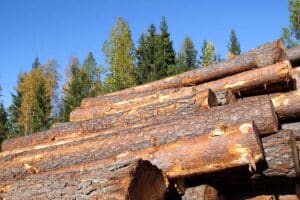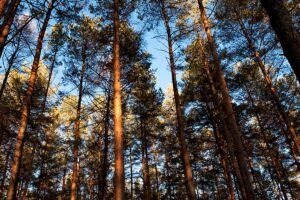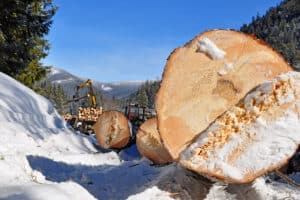For those of us who prefer work over worry, how should we think productively about forest industry disruptions associated with the coronavirus? How can we frame potential economic shocks? Current analysis of supply side (supply chain) and demand side disruptions varies widely. We struggle to quantify the size and duration of the potential economic impacts. So, we turn to frameworks and scenarios.
Applying a Framework to Evaluate Scenarios
A basic framework helps us study markets and evaluate strategies. When thinking through the mechanisms by which disruptions affect timber markets and forest investment cash flows, I ask two simple questions rooted in economic fundamentals:
- Big or small? In other words, how impactful, whether positive or negative, would we expect this disruption or change to be on forest supplies or wood demand?
- Long or short? What is the likely duration, whether positive or negative, of this disruption or change on supplies or demand (in the market or industry)?
Then we address a third issue as big changes can affect us locally, globally, or both. This reminds us to beware analysis in isolation. The coronavirus epidemic occurs in a larger context, one where trade policy impacted the forest industry and global economies began slowing in 2019.
In forestry, primary concerns are housing and “aggregate demand,” which is the three-dollar term referring to everything we buy at any given time. The coronavirus consumes economic growth through delayed production and consumption. To the extent it slows people it slows the economy and eats time. Our scenarios and analysis reflect this idea that the coronavirus hit a massive “pause” button on the U.S. economy. The question is, “for how long?”
It’s hard to make up for lost time. Consumption and production perish; months of inactivity translate to less economic growth and fewer housing starts. A one-month shock, where we strip one month’s worth of home construction from the system, from a 2020 U.S. softwood lumber standpoint, would mirror volumes consumed around 2015. However, we averaged 16.5% annual growth in housing starts from 2012 through 2015 to get there.
“Without a structured approach to ordering the world, the world will impose its views on us. The fact is some things are more important than others, some things are easily verifiable…Simple processes help us sort the mess and prioritize.” – from “Risk and Context in the Forest Industry”
The coronavirus presents two specific risks to most of us. One, we transmit the virus to someone vulnerable (older, ill, immunocompromised). Two, we or someone we love gets sick or injured in some other way and can’t access the health care system because it’s overwhelmed. These risks highlight the interconnected nature of the situation. Our individual choices affect others. So first, we take care of each other.
Then, with a clear sense of where we are and how things work, it’s easier to organize our teams and get moving. Then each day or week, we can check our scorecard – like we do each Monday at Forisk – and confirm we’re making progress on the right things. This gives purpose to our work and confidence in the process with an eye towards the future.
This content may not be used or reproduced in any manner whatsoever, in part or in whole, without written permission of LANDTHINK. Use of this content without permission is a violation of federal copyright law. The articles, posts, comments, opinions and information provided by LANDTHINK are for informational and research purposes only and DOES NOT substitute or coincide with the advice of an attorney, accountant, real estate broker or any other licensed real estate professional. LANDTHINK strongly advises visitors and readers to seek their own professional guidance and advice related to buying, investing in or selling real estate.










Add Comment